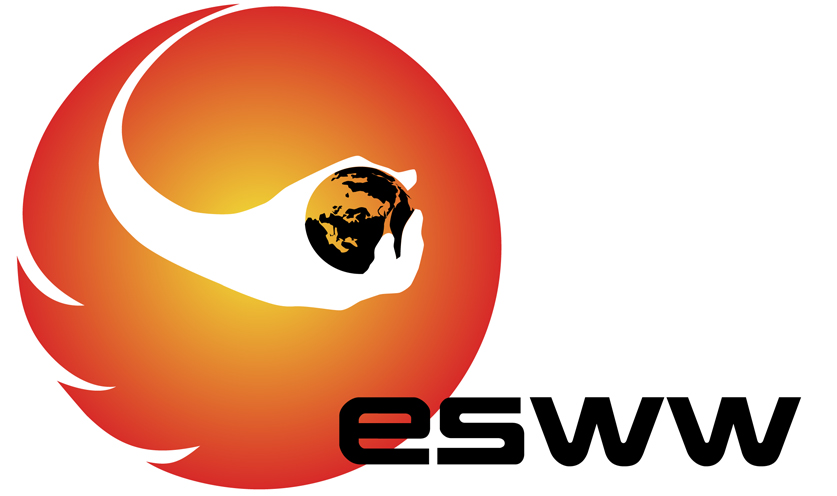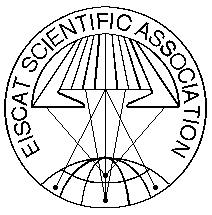
November 5 - 9, 2012, Brussels, Belgium
European Space Weather Landscape: Current Perspectives and Requirements for the Future
| Session: | Session 1 European Space Weather Landscape: Current Perspectives and Requirements for the Future |
| Date: | Monday 5 November 2012 |
| Chair: | S. Lechner (JRC) & J-P Luntama (ESA) |
| Remarks: |
16:00-16:30 Coffee Break & Poster Session 18:30 Keynote Lecture, followed by the Welcome Reception |
| Time | Title | ||
| 14:00 | EU space weather research in FP7 and in the future Malacarne, Marco European Commission, DG Enterprise and Industry The presentation will give an overview of the Space Weather related actions funded under the EU 7th framework programme for research. These actions cover a wide range of topics including science, modelling and forecasting, terrestrial effects as well as technology development. The presentation will also outline the role of space research and space weather research in the future EU research programme Horizon 2020. | ||
| 14:30 | Introduction to WMO space weather activities Zhang, Wenjian; Lafeuille, Jerome WMO, SWITSERLAND Although the primary scope of activity of the WMO is atmospheric weather, climate, hydrology and related sciences and applications in support of protection of life and property and socio-economic well-being, the WMO has started to be involved in Space Weather since 2008, upon request of several of its Members and of the International Space Environment Service (ISES). The aim is to build on WMOÕs experience of global operational services in order to support the coordination of emerging space weather information services.
| ||
| 15:00 | ESA views on the future SSA-SWE activities in Europe Bobrinsky, Nicolas; Luntama, Juha-Pekka; Glover, Alexi ESA/ESAC, SPAIN European Space Agency has been performing space weather related studies and activities actively for almost 15 years. Start of the SSA Preparatory Programme and the development of the SSA Space Weather Segment in 2009 was an important milestone during this period. Now the first ESA SSA-SWE service developments have been completed, the SSA-SWE precursor services are available for the user community to test and validate, and very important analysis of the space weather assets in Europe and hosted payload flight opportunities have been carried out. This presentation provides an overview of how ESA foresees the continuation of space weather activities within the SSA Programme and also within other programmes in the Agency. | ||
| 15:30 | NOAA - EU Space Weather Cooperation Onsager, Terry NOAA Space Weather Prediction Center Space weather is entering an important era of expanded international coordination. Although our understanding of the Sun-Earth environment has improved considerably over the past decades, our vulnerability to space weather has also increased due to growth in our reliance on technologies impacted by space weather. Around the globe, industry and government sectors are becoming more engaged in developing mitigating strategies and in assessing risks. International interest in providing space weather services is increasing, and various organizations are working to coordinate the effort. A key issue going forward is understanding how we can build on the foundation for collaboration that has been established and implement the needed improvements to our observing capabilities and to our services. In this presentation, NOAA's growing collaborations with the European Union will be summarized along with our priorities for future development and participation in broader international efforts. | ||
| 16:30 | Roadmaps for Future Operational Space Weather Services
Valdes Solorzano, Omar Ignacio1; Lawrence, Gareth1; Watermann, Jurgen1; de Donder, Erwin2; Kruglanski, Michal2; Berghmans, David3; Danielides, Michael4 1RHEA System, BELGIUM; 2Belgian Institute for Space Aeronomy, BELGIUM; 3Royal Observatory of Belgium, BELGIUM; 4German Space Agency, GERMANY We present the results of a study, conducted by RHEA and international partners, in which strategic Roadmaps for the development of a fully operational space weather system have been prepared. 37 Operational Space Weather Services have been specified to meet identified user needs as part of ESA's Space Situational Awareness (SSA) programme. Only a portion of these are offered today by existing European Infrastructure. Significant developments are needed in the areas of space weather sensors, scientific research, system and software engineering to reach the defined objectives. The study has defined a set of Service Requirements – detailed objective specifications for each identified service. The requirements have then been considered against a comprehensive list of existing European assets. Each Roadmap proposes the steps needed to evolve towards fully operational services in the medium and long term, taking full account of programme goals to maximise use of European expertise following a federated approach. A summary of the main findings, including lessons learned will be presented. |
||
| 16:45 |
The Solar Tsunami Warning System
Bothmer, Volker1; McInnes, Colin R.2; Hilgers, Alain3; Viereck , Rodney4; Vourlidas, Angelos5; Howard, Russell A.6; Harrison , Richard A.7; Rodmann , Jens1; Bosman , Eckhard1 1Institute for Astrophysics / University of Goettingen, GERMANY; 2Department of Mechanical and Aerospace Engineering / University of Strathclyde, UNITED KINGDOM; 3Space Environment and Effects Section (TEC/EES) / ESA/ESTEC, NETHERLANDS; 4NOAA Space Weather Prediction Center, UNITED STATES; 5Solar Physics Branche / Naval Research Laboratory, UNITED STATES; 6Solar Physics Branche, Naval Research Laboratory, UNITED STATES; 7STFC Rutherford Appleton Laboratory, UNITED KINGDOM The prime causes of major geomagnetic storms are fast solar coronal mass ejections (CMEs) and solar wind high speed streams, including the appearance of compound flows caused by stream interactions during their heliospheric evolution, e.g. in the case of multiple interacting CMEs with different propagation speeds. EUV and white-light remote sensing observations of the Sun's corona and photospheric fields, providing CME alerts and information on their source region locations, propagation speeds, near Sun evolution and magnetic field structure, are a necessary ingredient of any dedicated space weather forecast system. The development of sensitive wide-angle cameras, such as the Heliospheric Imagers of the SECCHI telescope suite on board the twin STEREO spacecraft, has enabled for the first time the tracking of CMEs over the entire distance from Sun to Earth. Building on the experience from STEREO, two satellites at a suitable separation angle with respect to the Sun-Earth line or in the Lagrangian L5 and L4 orbits would provide alerts of earthward directed CMEs and their tentative arrival times as well as the arrival of high speed streams. The spacecraft in the orbit trailing Earth would provide measurements of the co-rotating stream pattern about 4 days ahead of their passage over the Earth and on the solar wind structure into which a CME directed to Earth would be propagating. Since the intensity of solar energetic particle (SEP) events depends on the magnetic connection to the acceleration source region sites at the Sun and since CMEs originating in the Sun's western hemisphere are more likely to be swept across the Earth due to their interaction with the ambient solar wind, which make the observations of the coronal structure provided by the spacecraft leading Earth orbit a key measurement target. Because remote sensing observations alone can not provide fully quantitative forecast of the upcoming geomagnetic storm levels, and because of their dependence on the evolution of the CME and solar wind stream plasma and magnetic field parameter in the inner heliosphere, in situ solar wind measurements ahead of the Earth's magnetosphere, such as currently provided by the ACE satellite in L1, are another cornerstone of a space weather warning system that aims at providing reliable space weather forecasts. Since in the most severe space storms in history, termed "Carrington events", the CME travel times were less than a day, it would be of prime importance to help increase the prediction accuracy of the arrival time of CMEs at Earth and to measure in advance their precise plasma and magnetic field parameters. Solar sail technology has substantially developed over the past decade and the solar sail technology demonstration project "Sunjammer", heading for a sub L1 orbit, has just been approved by NASA as a technology demonstration mission to be ready for a 2014 launch. Using solar sail technology the DLR, ESA in a solar sail technology roadmap, a "displaced L1" solar sail mission scenario is under development. A spacecraft in DL1 could help double the warning time of the onset of space storms and provide the necessary measurements of the upcoming geomagnetic storm levels and the time evolution of the storm. The Lagrangian 3-D spacecraft trio in DL1, L4 and L5, equipped with suitable instrumentation, would provide in this way alerts of earthward directed CMEs with 12 hours as a lower minimum in time for cases of extreme fast CMEs, followed by the subsequent in situ DL1 measurements, providing half an hour to 1.5 hour ahead information on the real parameters of the "Solar Tsunami" wave passing over the DL1 buoy. This mission scenario "The Solar Tsunami Warning System" will be complemented by real time CME modeling, e.g. by the Graduated Cylindrical Shell (GCS) technique applied to beacon data and simulations of the solar wind streams by sophisticated codes, such as ENLIL. |
||
| 17:00 |
Helio, a new Tool for space Weather.
Aboudarham, Jean1; Bentley, Robert D.2; Csillaghy, André3; Gallagher, Peter4; Hapgood, Mike5; Messerotti, Mauro6; Jacquey, Christian7; Bocchialini, Karine8; Brooke, John9 1Coffee Break & Poster SessionObservatoire de Paris, FRANCE; 2MSSL/UCL, UNITED KINGDOM; 3FHNW, SWITZERLAND; 4TCD, IRELAND; 5STFC, UNITED KINGDOM; 6INAF/Trieste, ITALY; 7UPST, FRANCE; 8IAS/UPS, FRANCE; 9University of Manchester, UNITED KINGDOM
HELIO is a research infrastructure funded by the European Community under the FP7 I3 program; The project provides a wide access to dozens of solar and heliospheric databases scattered all around the world. A set of services allows the user to constraint queries based on a number of criteria. It is then possible to select not only data by observing time, but also by instrument characteristic, location in the solar system, etc. The HELIO system provides added values such as an event catalogue, which gives a centralised access to several event catalogues and connect their results to other kinds of queries and a feature catalogue giving information on the behaviour of solar and heliospheric features extracted using automatic features recognition codes. Moreover, a propagation model allows the user to connect data from various places of the solar system, giving the opportunity to follow phenomena propagating through the solar system. As the HELIO finishes at the end of 2012, the prototype is now fully operational, and users can already find information on the HELIO web page (http://www.helio-vo.eu/) and access and test the user interfaces at will. |
||
| 17:15 |
Empirical Approach to predict geomagnetic Disturbances Relevant to GIC
Wintoft, Peter1; Wik, Magnus2; Lundstedt, Henrik1; Eliasson, Lars1 1Swedish Institute of Space Physics, SWEDEN; 2NeuroSpace, SWEDEN The upstream solar wind interacts with Earth's magnetosphere causing geomagnetic storms primary driven by shocks and the turning of the IMF to negative Bz. During these events the local magnetic field, measured at ground stations, show a large degree of fluctuation from the highest measured resolution (seconds) to several minutes. These fluctuations induce electrical currents (GIC) in power grids, where the level of GIC is also determined by the ground conductivity. In this work we describe the available solar observations and derived data, solar wind measurements, and geomagnetic events in terms of dB/dt and empirical models for warnings and forecasts relevant for GICs. The forecasts are evaluated in real time against geomagnetic data from observatories in Europe. The models are implemented at Regional Warning Center-Sweden. The work is partly funded by the EU/FP7 project EURISGIC and the MSB project "Solar storms and space weather". |
||






